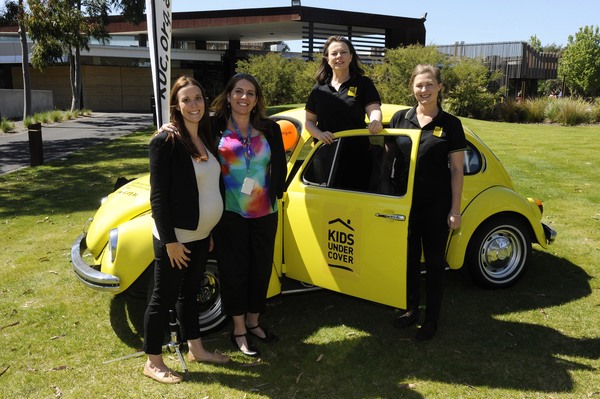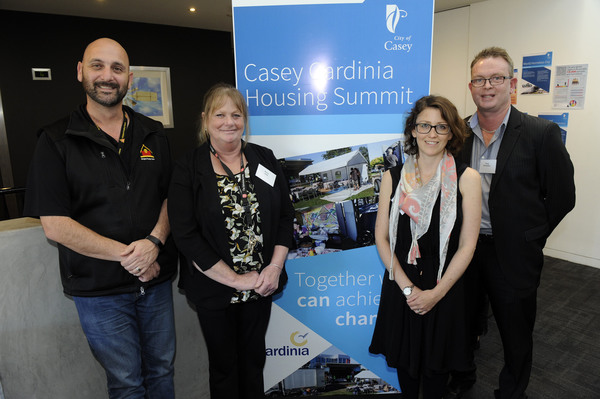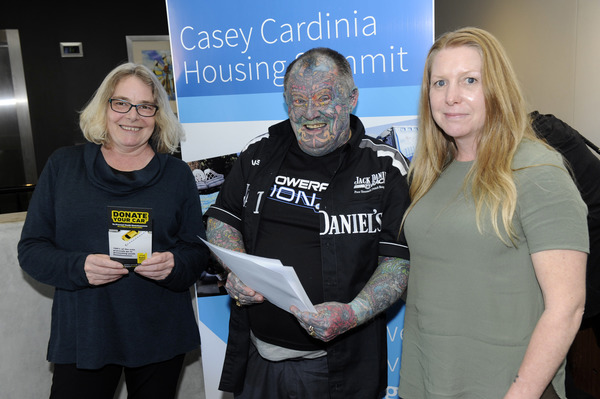By Cam Lucadou-Wells
A two per cent interest rate hike would be enough to jeopardise many mortgage-belt families, a Casey-Cardinia Housing Summit was told.
The summit on the region’s “emergency housing crisis” was jointly hosted by Casey and Cardinia Shire councils.
It attracted 140-plus representatives in the housing and homelessness sector on 10 October.
RMIT housing researcher Professor Guy Johnson told them that an interest rate rise would likely topple many families – the young, the first-home-buyers, the newly-settled migrants – into mortgage default.
That will in turn push more people into private rentals and squeeze more low-income families into homelessness.
He told Star News that Australian houses were among the most expensive in the world – sparked by a massive rise in 1997. For many, houses were unaffordable, Prof Johnson said.
Added to the combustible mix were record levels of household debt.
“With talk of interest rate rises in the New Year, families are going to struggle to pay their mortgage or reduce whatever money they can save or reduce the items that they consume.
“There is likely to be an increase of mortgage defaults.”
Prof Johnson also sounded a warning on tiny houses – an affordable-housing strategy that was being investigated by Casey Council.
“I’m very worried about the trend of using shipping containers or small houses – no matter how well-made and put-together they are.
“It will create a secondary market not unlike the trailer parks in the US.”
He said both the left and the right sides of politics were acutely aware of the shortage of affordable housing.
They needed to massively invest in social housing – a “tiny” market that had been growing by just 2500 homes a year across Australia.
“One thing that is in control of governments is increasing the supply of social housing.”
It may require superannuation funds to invest in the program, Prof Johnson said.
Casey North Community Information and Support Service executive director Susan Magee shared Prof Johnson’s concerns on mortgage stress.
Her relief agency was struggling to keep up with demands for emergency help, social workers and financial counselling, she said.
“With current demand, we don’t know how we’ll meet our budget at the end of the year. And that’s with low mortgage rates.
“A two per cent rate rise would hit this area so hard.”
Their financial counsellors were frantically busy, with four-week waiting lists to see families. In the past two years, the service has helped more than 1500 new clients.
In 2017, the service is tracking at more than 2000 clients overall – with the traditionally hectic Christmas period to come.
Leanne Petrides, executive director of the Cranbourne-based CISS, said affordable housing was so short that one single parent on Newstart couldn’t even afford to stay in a caravan park. Instead she lived with child in a car.
In 2016-’17, the service had more than 500 clients living in rooming houses, caravan parks or homeless.
Ms Petrides had mixed feelings on the tiny houses idea. Her preference was for safe, appropriate public housing.
“But the reality is we have these people living in appalling conditions where there are no exit points. Rentals are unaffordable.
“Tiny houses and shipping containers would alleviate some of that.”
City of Casey Mayor Cr Sam Aziz said the summit was an effective way to come together and hear about “the emergency housing crisis facing the region”.
“Our initial discussions uncovered the complexity of this issue and the need for a response that is collaborative, owned by multi-agencies and holistic in addressing the root causes of this issue.”










